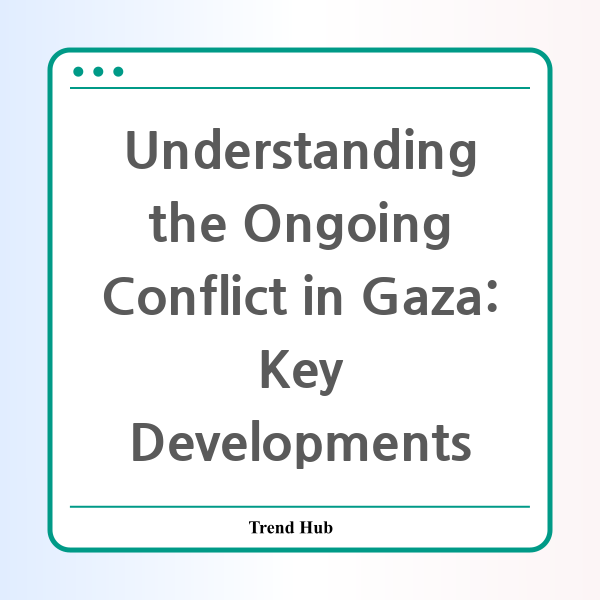* This website participates in the Amazon Affiliate Program and earns from qualifying purchases.

The recent escalation in Gaza has captured the world's attention as the situation grows increasingly dire. With at least 23 Palestinians reported dead due to Israeli airstrikes, the question arises: what is the future of peace in this troubled region? As tensions peak, understanding the dynamics of this conflict is essential.
Since the ceasefire's collapse on October 7, 2023, Gaza has endured relentless military actions from Israel. Nearly 700 people, primarily women and children, have lost their lives amidst the fighting, with local health officials describing the humanitarian conditions as alarming. Over 2.3 million residents within Gaza are facing displacement from their homes, and the ongoing situation is a critical concern due to recent aid suspensions by Israel.
Israel's strategic military campaign has expanded significantly, with recent directives ordering the evacuation of residents from key towns in the northern regions, including Jabalia, Beit Lahiya, and areas in Khan Younis. This expansion is a direct response to the threat of Palestinian rocket fire. Israeli Prime Minister Benjamin Netanyahu has emphasized that the military operations aim to pressurize Hamas into releasing hostages, raising the stakes of the conflict.
As the violence intensifies, fears of an all-out war loom large. The Israeli government has signaled a potential annexation of parts of Gaza if Hamas fails to comply with demands regarding hostage releases. This development could lead to significant territorial and humanitarian implications, exacerbating the already precarious living conditions for countless civilians.
Negotiations between the involved parties have reached a stalemate, with both sides attributing blame for the collapse of talks. The Israeli Defense Minister's warning regarding territorial annexation underscores the complicated nature of these discussions and the potential for a broader military confrontation.
One cannot overlook the human aspect of this conflict. The ongoing airstrikes have not only resulted in casualties but have also led to widespread psychological and emotional trauma among residents. The fear of constant bombardment creates a volatile environment that is hard to escape. Despite Hamas's claims of cooperation with mediators, the path to peace seems obscured by the actions and responses of both parties.
As the international community watches closely, the focus should remain on the lives affected by this conflict. Understanding the complexities of this situation requires a nuanced approach, recognizing the historical, political, and social factors at play. The ongoing conflict in Gaza speaks to broader issues of justice, human rights, and the need for sustainable peace in a region long plagued by violence.
In conclusion, as events in Gaza continue to unfold, it is crucial to stay informed and engaged with the realities faced by those living in the conflict zone. The world must push for dialogue, understanding, and ultimately, a resolution that respects the rights and dignity of all individuals involved.
* This website participates in the Amazon Affiliate Program and earns from qualifying purchases.